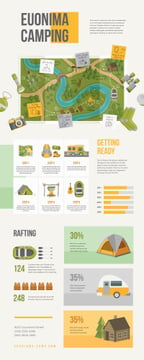Best Approaches To Sell Camping Tents And Operate An Online Camping Tents Operation
Best Approaches To Sell Camping Tents And Operate An Online Camping Tents Operation
Blog Article
How Crucial Are Outdoor Tents Footprints/Ground Cover?
Tent footprints are a wonderful way to safeguard your camping tent flooring from abrasions and expand its functional life. Nearly all equipment suppliers offer their own brand-specific impacts that are made to match their specific camping tent designs.
How many people can sleep in a tent?
This tailored approach uses ease of arrangement and reduces the risk of rain seeping in with the joints.
What are they?
Camping tent footprints (likewise known as outdoor tents ground sheets or under tent pads) give a layer of protection in between the base of your tent and the exterior setting. They protect your camping tent from sharp items, dampness, and rough surfaces.
The majority of tent suppliers provide their very own branded impacts designed to fit flawlessly with their designated sanctuary models. Nevertheless, these are normally expensive and fairly hefty compared to do it yourself options like Polycryo or Tyvek.
Impacts are normally made from resilient, water-proof products such as polyurethane, nylon or silnylon. For ultralight backpackers looking for to lessen pack weight, there are also lightweight, high-strength alternatives made from Cuben Fiber (Dyneema). It is very important to pick a footprint that's a little smaller than your camping tent to stop rain from leaking down the sides of your sanctuary and funneling beneath you while you rest-- no one wishes to awaken in a puddle! A footprint is a rewarding addition to any type of outdoor camping journey. It aids guarantee a long lifespan for your camping tent while including convenience and assurance.
Just how vital are they?
Tent footprints secure the base of your outdoor tents from abrasion and moisture, assisting to prolong its life-span. They're generally made of water resistant and dirt-resistant products like polyethylene or a light-weight oxford polyester, though the denier of the material will certainly differ (the higher the denier number, the thicker and burlier).
A lot of impacts are made to exactly match the shape of your outdoor tents's floor, which helps lessen product waste. Several have grommets or loopholes whereby you can weave guylines for stress and risks, guaranteeing that the impact is firmly held back.
If you camp in rough terrain or areas where there's a great deal of downed branches and sharp rocks, a tent impact is well worth the added weight and bulk. However if you often camp in dry, sandy or rocky conditions, a footprint may be overkill. A tarp is a much better choice in that case.
Do you commonly load one?
If you're camping on an extremely flat surface where rocks and sticks aren't a concern, an outdoor tents impact probably isn't needed. If you remain in the backcountry with a great deal of rough surface, an impact can make life a lot easier.
Impacts are normally sized somewhat smaller than the base of the outdoor tents. That's due to the fact that a larger footprint would capture rainfall and channel it under the outdoor tents, where you can awaken in a pool.
Nevertheless, footprints can be costly and heavy if you purchase one from the maker of your tent (the Big Agnes Tiger Wall UL 2 footprint, for example, costs $70 and weighs six ounces). You can conserve money and weight by making your own DIY footprint by cutting a piece of Tyvek or other water-proof fabric to the exact measurements of your shelter. You can also camp canvas include grommets for very easy accessory. The primary advantage of a footprint is that it aids to safeguard the flooring of your backpacking tent from rough components such as rocks and twigs.
Exactly how do you maintain them clean?
A maker's footprint can include significant weight to your shelter system and if you're an ultralight backpacker attempting to save every ounce, it could not be worth it. Consequently, several backpackers will certainly make use of a do it yourself groundsheet that's constructed out of something like Tyvek or Polycryo and cut it to size for their outdoor tents impact.
This alternative is reasonably economical and will certainly protect your outdoor tents from dampness, rocks, thorns, sticks, etc, while also aiding to maintain all-time low of your camping tent dry.
If you do make a decision to buy a footprint, make sure it's designed especially for your particular tent as this will certainly help reduce water merging around the edges of your sanctuary. For example, if your camping tent impact is also large and expands past the edge of your rainfly, it will certainly collect rains which can permeate right into lighter-weight tents and potentially wear down the floor. Ensure it fits your camping tent fairly snugly to avoid this.
What's the difference between campsite and tent site?
